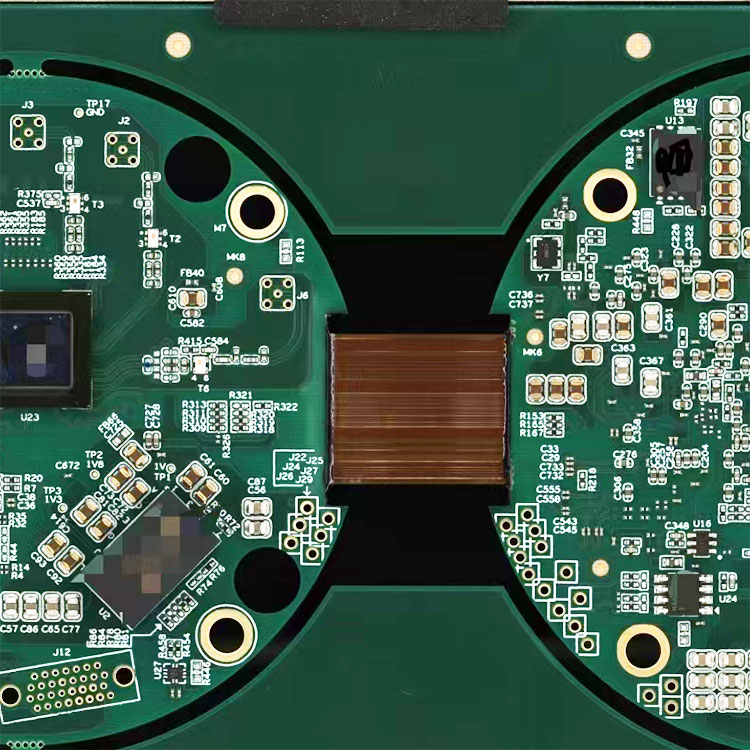
1. Size and complexity of the board.
2. Number of layers and materials used.
3. Surface finish and copper weight.
4. Number of drilled holes and their size.
5. The quantity and turnaround time of the production order.
1. Optimize the design to minimize the board size and complexity.
2. Use the minimum number of layers and materials required for the design.
3. Choose a cost-effective surface finish and copper weight.
4. Reduce the number and size of drilled holes as much as possible.
5. Plan the production order well in advance to avoid rush orders that can increase the cost.
1. Allows for greater design flexibility and miniaturization of devices.
2. Reduces the need for interconnectors and connectors, which can save costs and reduce failure points.
3. Increases the stability and reliability of the board by reducing the number of connections required.
4. Enables the creation of more complex designs that are not possible with traditional PCBs.
In conclusion, understanding the key factors that affect the cost of Rigid-Flex PCB is essential to optimize the design and reduce production costs. By using this unique type of PCB, businesses can create more complex and flexible designs, contributing to innovation and product development. Hayner PCB Technology Co., Ltd. is a leading manufacturer and supplier of high-quality Rigid-Flex PCBs. With years of experience in the industry and a commitment to quality, the team at Hayner PCB Technology Co., Ltd. is dedicated to providing efficient and cost-effective solutions to businesses around the world. For more information about their products and services, please visit their website at https://www.haynerpcb.com or email them at sales2@hnl-electronic.com.1. J. Wen and Y. Chen, "Design and Fabrication of Rigid-Flex PCB for Medical Devices," Journal of Medical Devices, vol. 14, no. 3, 2020.
2. X. Wang, et al., "A Study on the Reliability of Rigid-Flex PCBs in Avionics Applications," Journal of Electronic Packaging, vol. 143, no. 1, 2021.
3. K. Park and N. Kim, "Optimization of the Thermal Performance of Rigid-Flex PCBs for Wearable Devices," IEEE Transactions on Components, Packaging and Manufacturing Technology, vol. 11, no. 6, 2021.
4. P. Li, et al., "Design and Optimization of Rigid-Flex PCBs for Automotive Applications," Journal of Electronic Testing, vol. 37, no. 2, 2021.
5. Y. Zhang, et al., "A Comparative Study of Rigid-Flex PCBs in High-Speed and High-Frequency Applications," IEEE Transactions on Electromagnetic Compatibility, vol. 63, no. 2, 2021.
6. B. Guo, et al., "Development of Rigid-Flex PCB for IoT Applications," Journal of Microelectronics and Electronic Packaging, vol. 18, no.1, 2021.
7. R. Zhang, et al., "Investigation of the Dynamic Characteristic of Rigid-Flex PCBs for Aerospace Applications," Journal of Vibration and Shock, vol. 40, no. 2, 2021.
8. L. Chen, et al., "Optimization of the Routing Strategy for Rigid-Flex PCB with Signal Integrity Considerations," Journal of Electronic Design, vol. 3, no. 2, 2021.
9. Y. Wang, et al., "A Comprehensive Evaluation of the Environmental Performance of Rigid-Flex PCBs," Journal of Cleaner Production, vol. 294, 2021.
10. Z. Peng, et al., "Study on the Manufacturability of Rigid-Flex PCBs," Journal of Advanced Packaging, vol. 26, no. 1, 2021.
TradeManager
Skype
VKontakte
